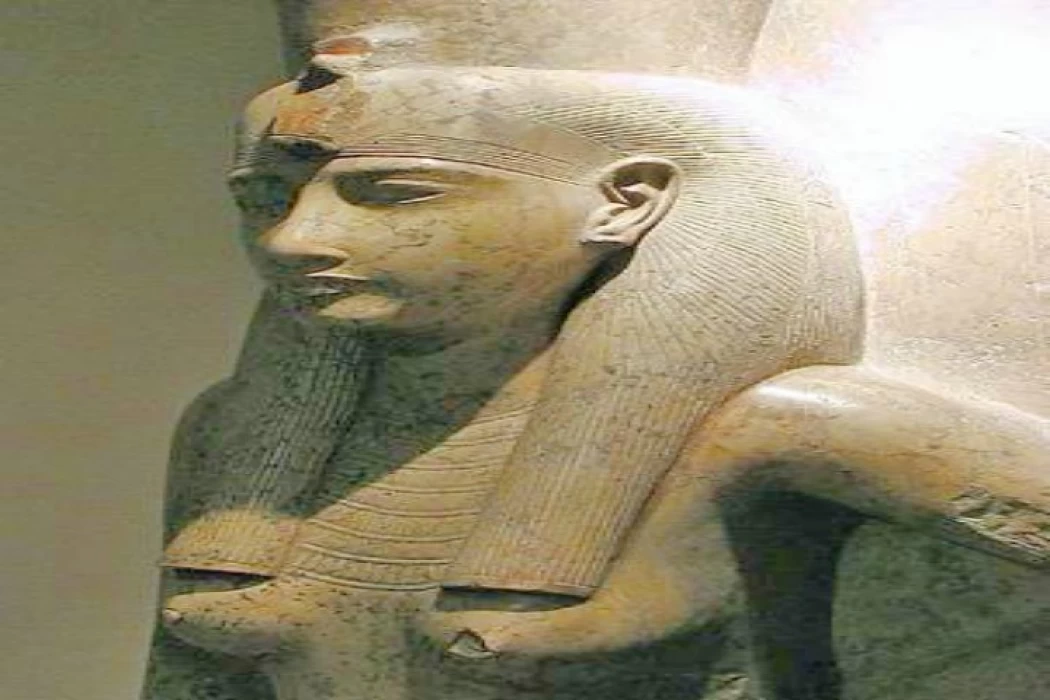
Goddess Mut | Egyptian Goddess of Heaven
Egyptian Goddess of Heaven
Wife of Amun, Mut was the queen of all the gods. She is represented in the fabulous temple of Luxor, located in ancient Thebes. Mut, or Mut, meaning "mother", is the mother of the gods in ancient Egypt. Her pronunciation and name changed over the thousands of years in several cultures and civilizations. She was often depicted as an Egyptian eagle, which is a white vulture.[1] The "goddess Mut" is the wife of Amun, and her son is Khonsu.
Mut, appears in the form of a woman, a female eagle, or a female lion. Sometimes the goddess Mut appeared in the same form as the famous goddess Sekhmet, who was symbolized in the form of a lioness. The Temple of the Goddess Mut was built by Amenhotep III in honor of the goddess Mut, the wife of the god Amun.
This temple suffered great damage during the religious revolution of Akhenaten, but it was restored again during the reign of King Tutankhamun and then during the reign of the kings of the Twenty-first Dynasty. Ptolemy I added some buildings to it, especially its great gate. All that remains of the first courtyard of this temple is some ruins, after which we reach the second gate, the entrance of which was decorated with a picture of the dwarf god Bes, the Lord of Joy.
Among the ruins of the temple are statues of the goddess Sekhmet, which seem to represent the goddess Mut herself. There is also a huge statue of King Amenhotep III, and several statues representing monkeys, which symbolized the god Khonsu, son of the goddess Mut. Next to the temple is a large pit, which is the sacred lake of this temple, and the temple is surrounded by a great wall of mud bricks.
The god Amun used to visit his wife, the goddess Mut, once a year, moving from his temple in Karnak to the Luxor Temple. Therefore, they made the Karnak house the official palace of Amun and the Luxor house his private home where he lived with his wives. However, he would not move to that house in his official procession except on a special date during the year.
Goddess Mut
Mut, the goddess of heaven who had the wind god Amun as her husband, due to her name is known as the mother of all creation, she and her husband were idolized in Thebes, represented with a double crown and an ornament in the form of a vulture on top of it, he was seen wearing a bright blue or red suit and in his hands, he carried a papyrus and the ankh that was the key to life.
She was also recognized as a world mother, eye of Ra, and lady of heaven, they also represented her through hieroglyphs as a vulture for being considered maternal animals.
This divinity was shown with wings for being the deity of the firmament among all the Egyptian gods, she was also frequently seen as a cow behind her husband or as a lioness for being a warrior.
Mout (or Mut), whose name means “mother,” symbolizes maternal values and is one of the oldest deities in the Egyptian pantheon. She is also a dangerous goddess when she takes the form of the “Distant Goddess” (Hathor), assimilated to Sekhmet. She was adopted by the Greeks as the goddess Hera, Zeus's wife, during the Hellenistic Period (305–30). Mother of the World, Eye of Ra, Queen of Goddesses, Lady of the Sky, and Mother of the Gods were some of her titles.
Her place of worship was Isheru, a village south of Karnak. She is venerated there, in her sanctuary located south of the Temple of Amun, called Hout-Mou, in the guise of Sekhmet, but more generally as a woman wearing a white crown or a vulture. Other shrines are attested in Bubastis, Hermonthis, Memphis, Tanis, Saïs, and in the oases of Kharga and Dakhla.
Egyptian Goddess of Heaven
In this way, the sun was represented by her husband Amun-Ra and the moon god Khonsu, which is why Mut symbolizes the third eye that reveals the universal superiority which cooperated in the flood of the Nile.
This goddess was requested in the Book of the Dead to prevent a mummy from rotting, a few words were said holding an image of her that had 3 heads: the first was the head of the goddess Pajet, ''a minor Egyptian deity, from the time of the Middle Kingdom'' with two feathers, then it was a human head with two crowns and finally a vulture head with two feathers.
She is associated with the Theban triad (Amon, Mut, and Khonsu), where she is both the wife, mother, and daughter of Amon and the mother of the moon god Khonsu... During the 18th Dynasty (1549-1295), her cult became important, replacing that of the goddess Amonet, wife of Amun, in Thebes. Having no children, she decided to adopt Montu, then Khonsu, as Montu declined the offer. She was between the sun (Amon-Re) and the moon (Khonsu) as the third eye, showing cosmic perfection and promoting the flooding of the Nile.
She is mentioned in the Book of the Dead as helping the deceased reach the afterlife and preventing them from decomposing. She appears on the walls of many temples alongside her husband Amun as “Mistress of the Nine Bows” (symbol of all the enemies of Egypt).














